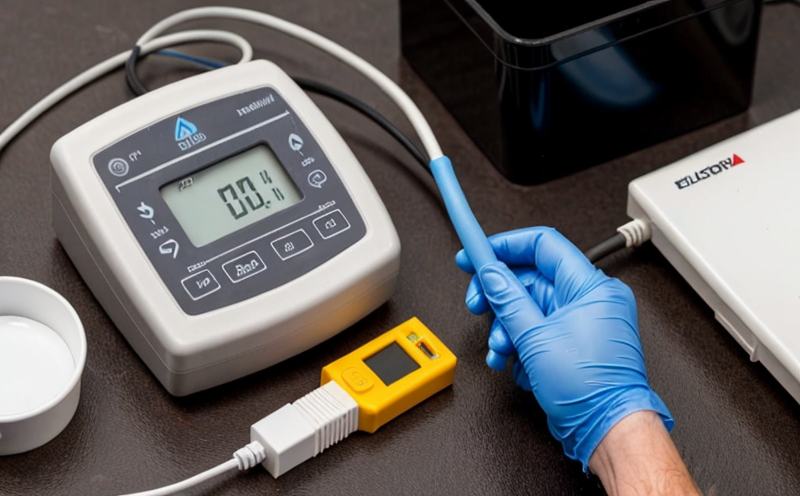DIN EN ISO 12696 Electrochemical Testing of Steel in Concrete
The DIN EN ISO 12696 standard provides a robust framework for the electrochemical testing of steel embedded in concrete. This method is essential for assessing the corrosion resistance and durability of reinforcing steel within concrete structures, ensuring long-term integrity and safety.
The process involves placing an electrical potential between the embedded steel and the surrounding concrete matrix to measure the current density. This technique allows for a non-destructive evaluation of the condition of the steel reinforcement. By monitoring the electrochemical behavior, engineers can identify early signs of corrosion and take preventive measures before significant damage occurs.
The standard is particularly applicable in environments where chloride contamination or aggressive chemicals are present, such as coastal regions, industrial areas, or de-icing salts used on roads. The method helps to determine whether protective coatings or cathodic protection systems are effective, thereby extending the service life of concrete structures.
Electrochemical testing using DIN EN ISO 12696 is a precise and reliable method that complies with international standards. It allows for consistent and reproducible results, making it an indispensable tool in quality management, compliance verification, and research and development within the construction sector.
The test procedure involves several critical steps:
- Selection of appropriate reference electrodes
- Application of a constant potential between the steel and concrete
- Measurement of current density over time
- Evaluation against predefined acceptance criteria
The standard also emphasizes the importance of environmental factors such as temperature, humidity, and chloride concentration in influencing the electrochemical behavior of steel. By considering these variables, the test results provide a comprehensive understanding of the concrete's corrosive environment.
In conclusion, DIN EN ISO 12696 is an essential tool for ensuring the quality and durability of concrete structures through effective monitoring of embedded steel reinforcement. Its application in various sectors such as infrastructure development, construction, and maintenance makes it a cornerstone of modern engineering practices.
Applied Standards
The DIN EN ISO 12696 standard aligns with other international standards that focus on the durability and corrosion resistance of steel in concrete. It complements ASTM C873, which also addresses electrochemical testing for assessing reinforcement quality.
Both standards are designed to ensure consistent evaluation methods across different regions and industries. This alignment is crucial for global projects where compliance with local or international regulations is necessary. The use of such standardized procedures helps in achieving uniform results, facilitating better decision-making and communication between stakeholders involved in construction projects.
The application of these standards ensures that all parties are working towards the same goals—maintaining structural integrity and safety while adhering to best practices in material selection and maintenance.
Environmental and Sustainability Contributions
- Promoting sustainable construction: By identifying early signs of corrosion, this testing method helps prevent premature replacement of concrete structures, thus conserving resources.
- Efficient material use: Early detection allows for targeted interventions, minimizing waste and the need for extensive repairs or replacements.
- Reduced carbon footprint: Through extended service life, the environmental impact of new construction is reduced, contributing to global sustainability goals.
The electrochemical testing method not only supports sustainable practices but also enhances safety by ensuring that structures remain robust and reliable over their intended lifespan. This aligns with broader industry efforts to adopt more sustainable approaches in engineering and construction.
Use Cases and Application Examples
DIN EN ISO 12696 electrochemical testing is widely used across various sectors, particularly in infrastructure development, where the long-term durability of concrete structures is critical. Here are some specific use cases:
- New construction projects: Testing during the design and construction phases helps ensure that protective measures are effective against corrosion.
- Maintenance programs: Periodic testing can identify areas where protective coatings or cathodic protection systems need enhancement.
- Rehabilitation of existing structures: This method is crucial for assessing the current condition and planning necessary interventions to extend the service life of aging infrastructure.
In addition, this standard is used in research and development efforts aimed at improving the corrosion resistance of steel in concrete. By leveraging electrochemical testing, engineers can develop innovative solutions that enhance durability and sustainability.
The application examples demonstrate the versatility and importance of DIN EN ISO 12696 in ensuring robust and reliable infrastructure across various industries. Its use underscores the commitment to quality and safety in construction practices globally.





